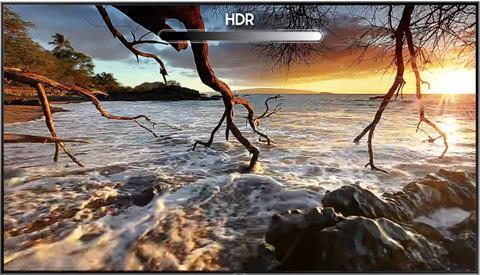Zeb Chadfield at The Finish Line provides an easy-to-follow guide outlining what to consider when finishing in High Dynamic Range

Navigating the world of High Dynamic Range (HDR) can be as frustrating as dealing with a salesperson pushing the “highest frame rate” TV.
At its core, HDR surpasses the limitations of Standard Dynamic Range (SDR) by providing a more true-to-life visual experience. Professional cameras have captured more dynamic range than SDR can display for years, requiring colourists to force the brighter parts of the image to fit within SDR constraints.
Now, consumers are increasingly encountering HDR, but its representation across different displays remains inconsistent.
Display types like Mini LED, MicroLED, and OLED each have their pros and cons, affecting the HDR experience in various ways.
Currently, most HDR mastering for television targets 1,000 nits (a measure of brightness), though the specifications allow a maximum of 10,000 nits.
However, displays vary greatly, with some only capable of 100 nits for SDR. This variation means that displays often need to apply algorithms to adapt the luminance to fit their capabilities, impacting the image quality.
The technology faces limitations in colour display, brightness, black depth, detail, contrast ratio, and calibration accuracy.
These challenges have historically limited confidence in HDR imaging, often necessitating comparisons across different modes and display types to ensure peak luminance, contrast and image accuracy.
However, with the advent of QD-OLED technology, we’re starting to overcome these hurdles.
At The Finish Line we recently picked up two XMP550 monitors from Flanders Scientific for HDR picture finishing. These displays utilise QD-OLED, and without getting too technical, represent a significant leap in HDR technology, providing high luminance levels without colour collapse, excellent viewing angles, no blooming, detailed shadows, and stable luminance without flickering. They are without a doubt the best displays I’ve ever seen.
Yet, mastering on advanced displays is only part of the equation. The complexity in our work is that creatives must understand the downstream effects of what we do, considering the vast array of display technologies in the market.
The XMP550 offers the most accurate image representation, but the final viewing experience still varies depending on the viewer’s display, of which there are many variables.
In our experience, we’ve found common themes and developed some tips.
First, understand that working with HDR doesn’t mean you should be maxing out luminance. The expanded range is for creative flexibility, not a new target. Overemphasising brightness often leads to poor HDR quality.
Regarding colour volume, it’s also not about pushing limits. The current standards are usually sufficient, I don’t think I have ever watched kids TV and thought it needed more colours or saturation.
HDR does utilise colour spaces with increased gamut (available colours and colour volume), but they are available in SDR too, so it doesn’t really need to be a big part of the conversation.
Embrace Dolby Vision, but look past the marketing. It’s not about HDR, it’s actually better thought of as a translation layer from your master to all other formats, including SDR and cinema. Properly used, Dolby Vision can create consistent and impressive results across all viewing environments from one finished master.
The Dolby Vision trim passes, ideally, should occur on the complete HDR version, not just the grade. It’s important to analyse all elements of the final image, and it can be effectively done on a standard SDR mastering monitor with the right settings available.
The SDR trim is best treated as a technical pass that maintains the artistic intent of the HDR version. It’s not about reimagining the work but ensuring compatibility across different viewing environments.
It’s rare to find that the SDR trim requires the presence of production beyond a basic review, if the HDR work is well-executed and signed off.
Finally, view your work on various displays to understand how it translates across different technologies. This understanding is crucial for adapting to the evolving landscape of HDR and ensuring your work looks as intended to all viewers.
Most of the displays from Apple are surprisingly accurate and serve as a great viewing environment for testing these variables. They use a number of different technologies and have a lot of different HDR limits, from 600 to 2,000 nits.
HDR is more than just a technological advancement, it’s a new way of thinking about visual storytelling.
It opens up immense opportunities for creativity while still allowing older displays to come along for the ride through the support of Dolby Vision and similar technologies.
A quick search for “why are movies and TV so dark?” will show we still need to be mindful of both its possibilities and its limitations. It’s integral that our creative choices translate effectively across the diverse range of viewing environments, and as with all creative work it must always enhance the story rather than distract from it.

Zeb Chadfield is finishing artist at The Finish Line





No comments yet